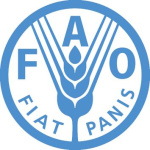- Industry: Agriculture
- Number of terms: 87409
- Number of blossaries: 0
- Company Profile:
Established in October 1945 with the objective of eliminating hunger and improving nutrition and standards of living by increasing agricultural productivity, FAO coordinates the efforts of governments and technical agencies in programs for developing agriculture, forestry, fisheries, and land and ...
The collection of genes coding for peptides present on the surface of nucleated cells; these peptides are responsible for the differences between genetically non-identical individuals that cause rejection of tissue grafts between such individuals. These peptides were originally called histocompatibility antigens. They are now called histoglobulins, reflecting their structural similarity to immunoglobulins.
Industry:Biotechnology
The collection of genes coding for peptides present on the surface of nucleated cells; these peptides are responsible for the differences between genetically non-identical individuals that cause rejection of tissue grafts between such individuals. These peptides were originally called histocompatibility antigens. They are now called histoglobulins, reflecting their structural similarity to immunoglobulins.
Industry:Biotechnology
The combination of lignin, hemicellulose and cellulose that forms the structural framework of plant cell walls.
Industry:Biotechnology
The combination of ovum pickup (q.v.), <i>in vitro</i> maturation (q.v.) of ova, and <i>in vitro</i> fertilization (q.v.). A potential means of overcoming the variability between donors in number of ova collected in embryo-transfer programmes.
Industry:Biotechnology
The combined use of marker-assisted selection (q.v.) and embryo technologies such as OPU (q.v.), IVM (q.v.) and IVF (q.v.), in order to increase the rate of genetic improvement in animal populations.
Industry:Biotechnology
The comparison of map locations of genes between species. The results of these comparisons indicate substantial conservation of blocks of genes and even large segments of chromosomes between species. Great use can be made of this conservation of map position. For example, in the case of mammals, it means that if a gene has been mapped in one or both of the intensely-mapped species (humans and mice), then the likely location of that gene in other mammals can be predicted with considerable confidence. Conversely, if a mapped anonymous DNA marker has an effect on a quantitative trait (this being indicative of the marker being linked to a quantitative trait locus (QTL)) in, say, cattle, then knowledge of the comparative map between cattle and humans can identify genes in the homologous region of the human genome that could correspond to the QTL. Such genes are called comparative positional candidate genes (q.v.).
Industry:Biotechnology
The complete replication apparatus present at a replication fork that carries out the semi-conservative replication of DNA.
Industry:Biotechnology
The complete sequence of events undergone by organisms of a particular species, from the fusion of gametes in one generation to the same stage in the following generation.
Industry:Biotechnology
The complex of a living community and its environment, functioning as an ecological unit in nature. <i>cf</i> abiotic factors; biotic factors.
Industry:Biotechnology
